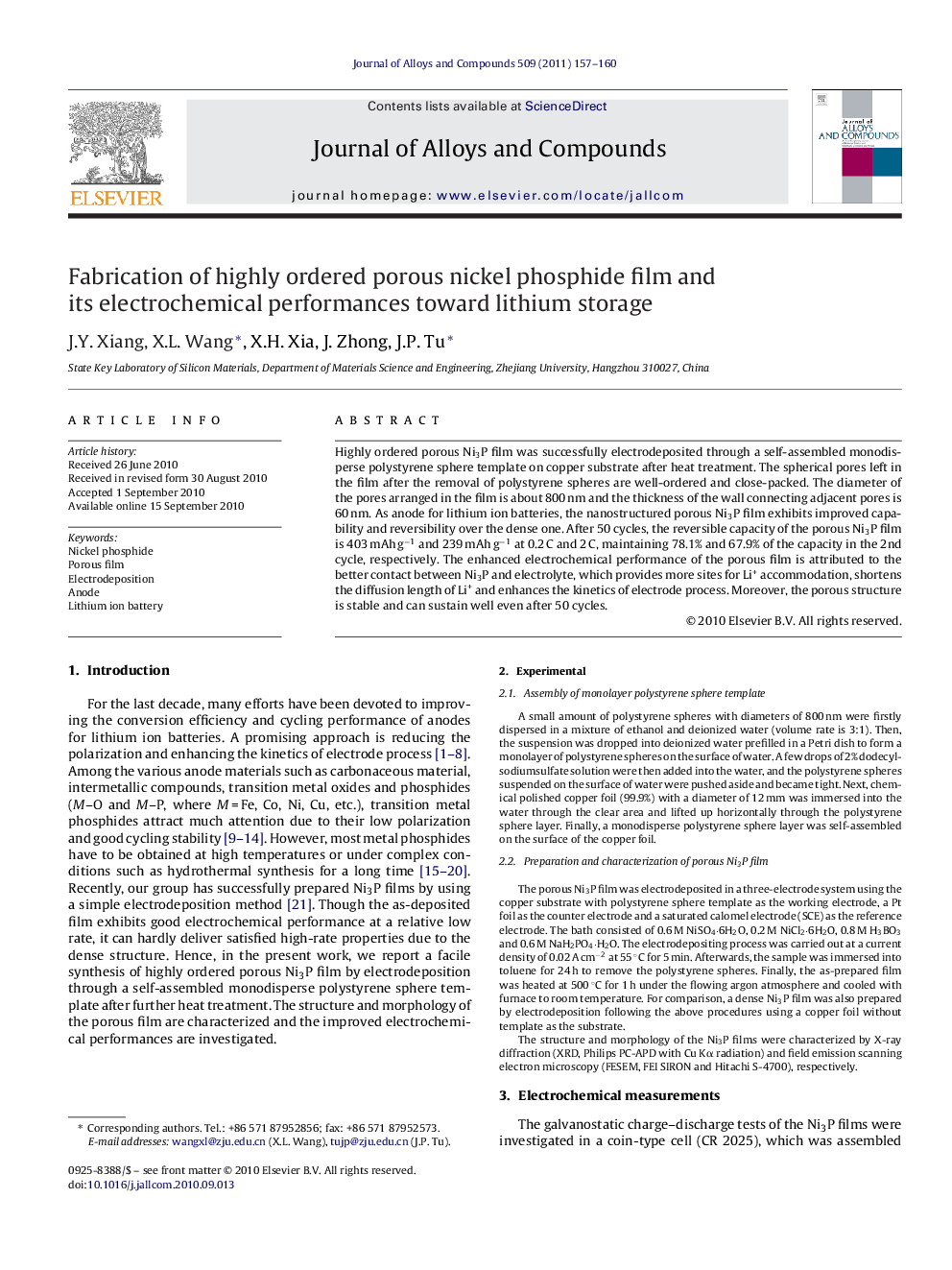| Article ID | Journal | Published Year | Pages | File Type |
|---|---|---|---|---|
| 1619022 | Journal of Alloys and Compounds | 2011 | 4 Pages |
Highly ordered porous Ni3P film was successfully electrodeposited through a self-assembled monodisperse polystyrene sphere template on copper substrate after heat treatment. The spherical pores left in the film after the removal of polystyrene spheres are well-ordered and close-packed. The diameter of the pores arranged in the film is about 800 nm and the thickness of the wall connecting adjacent pores is 60 nm. As anode for lithium ion batteries, the nanostructured porous Ni3P film exhibits improved capability and reversibility over the dense one. After 50 cycles, the reversible capacity of the porous Ni3P film is 403 mAh g−1 and 239 mAh g−1 at 0.2 C and 2 C, maintaining 78.1% and 67.9% of the capacity in the 2nd cycle, respectively. The enhanced electrochemical performance of the porous film is attributed to the better contact between Ni3P and electrolyte, which provides more sites for Li+ accommodation, shortens the diffusion length of Li+ and enhances the kinetics of electrode process. Moreover, the porous structure is stable and can sustain well even after 50 cycles.
Research highlights▶ Highly ordered porous Ni3P film is successfully prepared by a facile electrodeposition method. ▶ The nanostructured porous Ni3P film exhibits significantly improved capability and reversibility over the dense one. ▶ The porous structure is stable and can sustain well even after 50 cycles. ▶ The simple and low-cost method provides a potential approach for fabricating other nanoporous transition metal phosphide films.
